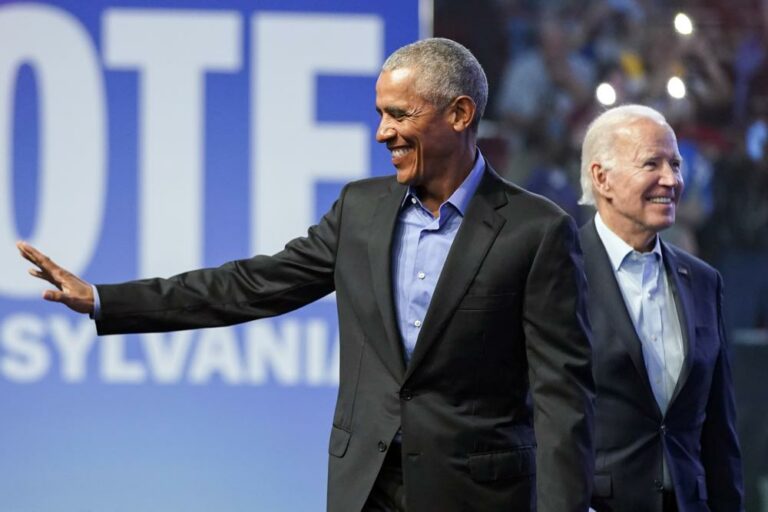 North Korea responded Thursday to new sanctions from South Korea by firing short-range ballistic missiles into the sea in a show of defiance and vowing to “liquidate” all remaining South Korean assets at former cooperative projects in the North.
North Korea responded Thursday to new sanctions from South Korea by firing short-range ballistic missiles into the sea in a show of defiance and vowing to “liquidate” all remaining South Korean assets at former cooperative projects in the North.
The moves are the latest in an escalating standoff between the Koreas that began in January when North Korea detonated what it said was an “H-bomb of justice,” its fourth nuclear test. Since then, the North has launched a long-range rocket and the South has shut a jointly run factory park, slapped sanctions on the North, and begun large-scale war games with the United States. North Korea responded by threatening nuclear strikes on South Korea and the U.S. mainland.
The missile firing Thursday came a day after North Korean media printed photos of what appeared to be a mock-up of a nuclear warhead.
The North’s Committee for the Peaceful Reunification of Korea said in a statement Thursday that North Korea will “liquidate” South Korean assets at the closed factory park in the North Korean border town of Kaesong and at a scrapped tourism resort at Diamond Mountain. In a continuation of bellicose rhetoric that has spiked in recent weeks, it said North Korea will also impose “lethal” military, political and economic blows on the South Korean government to accelerate its “pitiable demise.”
South Korea’s government called the North Korean statement a “provocative act” and warned the North not to damage any South Korean assets.
North Korea didn’t say what exactly it would do with the South Korean assets. Observers said it could move the remaining manufacturing equipment at Kaesong to other industrial areas or convert it to military use, and use the South Korean-owned facilities at Diamond Mountain for its own tourism project.
The South Korean assets at Kaesong include buildings, manufacturing equipment and finished products. The assets at the resort are a hotel, a spa, a golf course and a building used for occasional reunions of Korean families separated by war. The assets are worth about 1.4 trillion won ($1.2 billion) in total, according to Seoul’s Unification Ministry.
The North Korean statement called the new South Korean sanctions “laughable, unsightly,” and referred to South Korea’s female president, Park Geun-hye, as an “American prostitute,” the latest in a series of sexist attacks on her.
All of this has ratcheted up hostility on the already anxious Korean Peninsula. But, so far, analysts don’t see the possibility of things spinning out of control. Some of the North’s rhetoric is intended for a domestic audience to display government strength ahead of a major meeting of the ruling party in May.
The missiles fired by North Korea on Thursday flew about 500 kilometers (310 miles) before falling into the ocean off the country’s east coast, Seoul’s Defense Ministry said. They were believed to be Scud-type missiles, ministry spokesman Moon Sang Gyun said.
Such missile firings by the North are not uncommon when animosity rises. North Korea hates the annual military drills staged by Seoul and Washington, calling them preparations for an invasion. The allies say the drills, which this year are described as the biggest ever, are defensive and routine. North Korea warned at the start of the drills Monday of pre-emptive nuclear strikes.
On Wednesday, North Korea printed photos in official media of a purported mock-up of part of a nuclear warhead, with leader Kim Jong Un repeating a claim that his country has developed miniaturized atomic bombs that can be placed on missiles.
Information from secretive, authoritarian North Korea is often impossible to confirm, and the country’s state media have a history of photo manipulation. But it was the first time the North has publicly displayed its purported nuclear designs, though it remains unclear whether the country has functioning warheads of that size or is simply trying to develop one.
South Korea’s Defense Ministry on Wednesday disputed the North’s claim that it possesses miniaturized warheads.
U.S. State Department spokesman John Kirby declined to comment on North Korea’s nuclear capabilities, saying it was an intelligence matter, but told reporters the U.S. takes the North’s rhetoric seriously.
The United States said Wednesday it has dispatched three B-2 stealth bombers capable of launching nuclear as well as conventional weapons to the Asia-Pacific region. The U.S. Strategic Command said the bombers will conduct training with the Australian military during their deployment, which amounts to a show of force at a time of mounting tensions with North Korea.
(AP)










